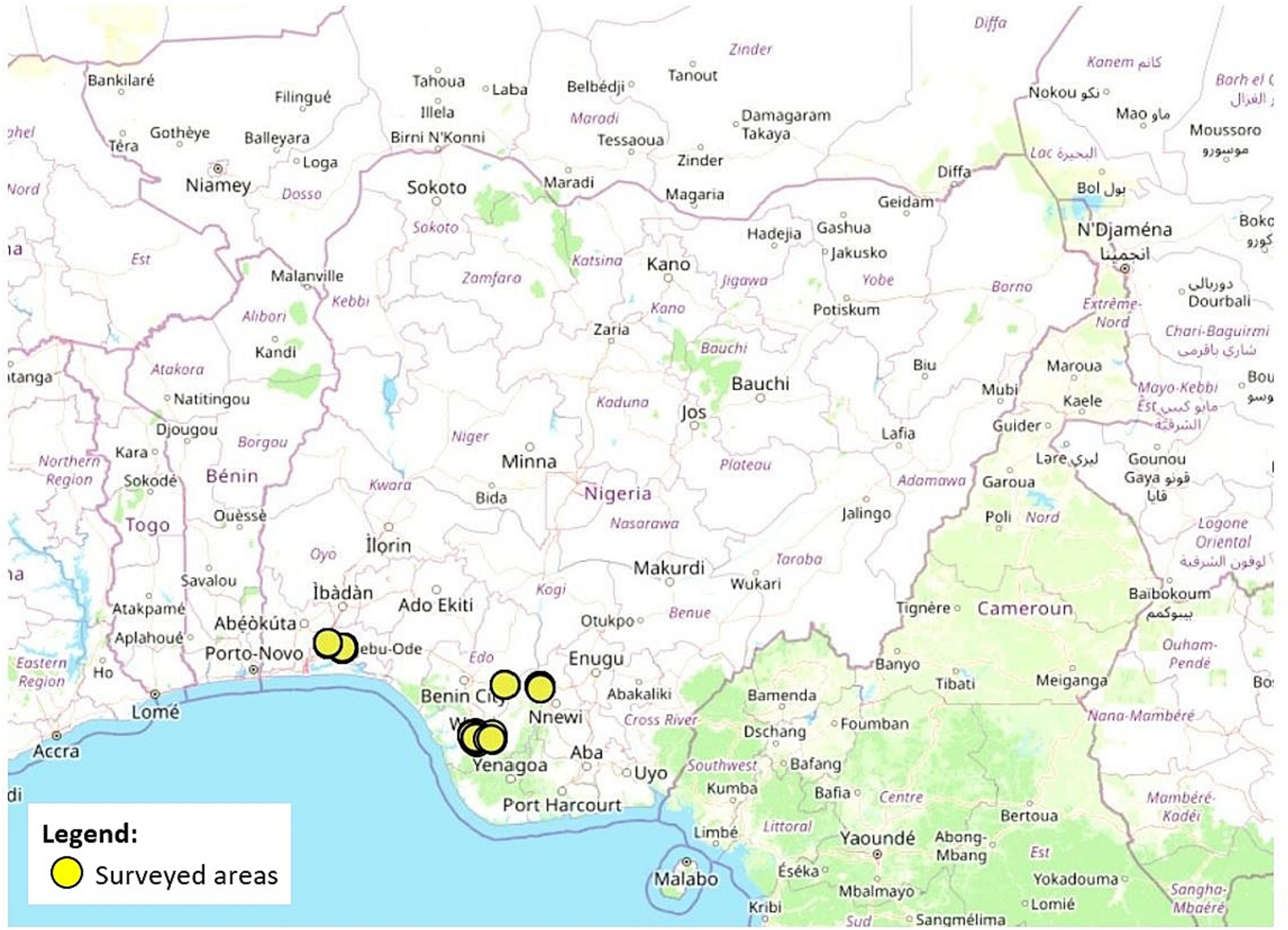
Authors: Laura Khor, Olusola Ayodele Bodunde, Robert Wills, Larry Hanson, Olanike Kudirat Adeyemo, Oluwasanmi Olayinka Aina, Selim Adewale Alarape, Jérôme Delamare-Deboutteville, and Vishnumurthy Mohan Chadag
Abstract
Nigeria is one of Africa's largest aquaculture producers with catfish and tilapia being dominantly farmed. However, the lack of biosecurity and an unclear aquatic animal health strategy have resulted in substantial disease-related production losses. This study aimed to better understand the existing biosecurity management practices and risk factors that could potentially lead to mortality in catfish production systems using Ogun and Delta States as study sites for a regional model. For this purpose, WorldFish and partners developed a Fish Epidemiology and Health Economics digital survey tool (version 1.13) to collect cross-sectional data from farms within the two states. Consenting farms were recruited from four Local Government Areas (LGAs) (Ijebu-Ode, Ikenne, Odogbolu and Shagamu) in Ogun State and five LGAs (Oshimili South, Udu, Ughelli North, Uvwie and Warri South) in Delta State, from which the data of 220 farms raising table-size catfish were analyzed. Descriptive statistics was used to classify findings by state identity and unusual level of mortality (abnormal losses with higher intensity or quantity) according to production systems, biosecurity measures, management practices, and other potential risk factors. Mixed model logistic regression was used to assess the association between high mortality occurrence and potential risk factors. No significant association between unusual farm mortality and state identity was detected (p = 0.314) but those were included as a random effect to account for them as a source of variation. Only 10.45% of farms experienced unusual fish mortality; however, those farms (n = 23) had higher baseline mortality (p = 0.015) at 15.08%, compared to 6.57% in farms without unusual mortality (n = 197). Only 14.55% of farms documented mortality on paper records, while other farms estimated losses from memory. Most farms (96.82%) did not implement biosecurity procedures at stocking. In that aspect, significantly more farms (p = 0.045) that introduced fish after main stocking reported unusual mortality (42.86%) compared to those that did not restock afterwards (9.39%). Farms using solely homemade feed had 5.1 and 18.2 times greater odds of unusual mortality compared to farms using only commercial feed and those depending on both commercial feed and other materials respectively (p = 0.049). Meanwhile, only 1.36% of farms reported using the services of a veterinarian. Findings from this study indicated plenty of room for biosecurity improvement in earthen pond systems rearing catfish in Ogun and Delta states. Risk factor analysis of industry data can inform the development of local biosecurity management plans and national aquatic health strategy guidelines for sustainable aquaculture.
Read the full publication at https://doi.org/10.1016/j.aquaculture.2024.740664.
Published March 8, 2024
